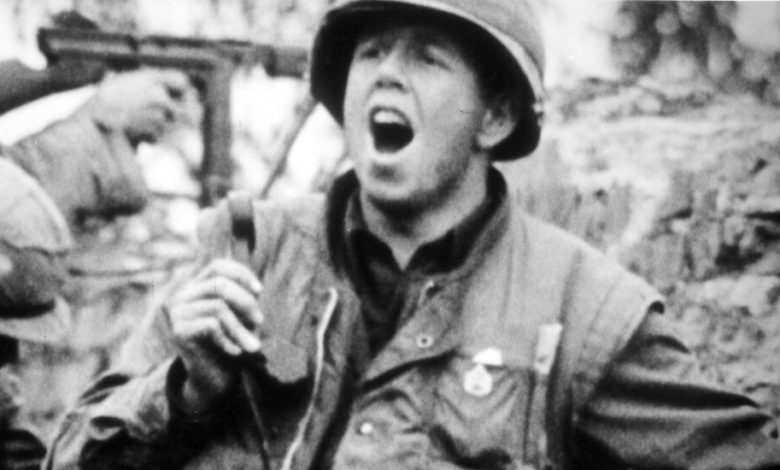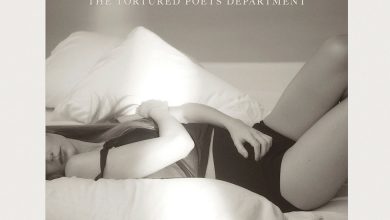Three Great Documentaries to Stream

The proliferation of documentaries on streaming services makes it difficult to choose what to watch. Each month, we’ll choose three nonfiction films — classics, overlooked recent docs and more — that will reward your time.
‘Hearts and Minds’ (1975)
Stream it on the Criterion Channel and Max. Rent it on Amazon and Apple TV.
“We must be ready to fight in Vietnam,” President Lyndon Johnson said in 1965, “but the ultimate victory will depend upon the hearts and the minds of the people who actually live out there.” Putting that notion to the test, Peter Davis’s landmark documentary on the war, first shown in 1974, methodically makes the case that the hearts and minds of the Vietnamese people were impossibly far apart from those of the government and military officials in the United States.
Davis advances his argument through pointed, polemical juxtapositions. For instance, he shows the American lieutenant George T. Coker, who had been a prisoner of war from 1966 to 1973, enthusiastically discussing the technological prowess of air operations in Vietnam (“A World War II aviator would not even dream of doing the things we did. It’s definitely the ultimate in aviation”) before immediately cutting to a shot of a Vietnamese man driving a horse-drawn carriage. He jumps from Diem Chau, a Vietnamese magazine editor, describing the war as a fight for independence to a tame American Revolutionary War re-enactment in Westchester County.
This dialectical back-and-forth struck some critics in the 1970s as cheap. Reviewing the film in The New York Times, Vincent Canby, responding to the detractors, cited a moment in which Davis cuts from a burial in Vietnam to an interview with Gen. William C. Westmoreland — who claims that the Vietnamese don’t “put the same high price on life as does the Westerner” — as an instance in which Davis had “loaded his dice.”
But the filmmaker’s strategy, and the interweaving of news footage and interviews, has only become more prevalent in documentaries in the past 50 years. It’s hard not to look at “Hearts and Minds” as ahead of its time. The material itself is still jaw-dropping. A Vietnamese man walks around the rubble of his home and lists all the relatives who were killed in a bombing. (His daughter was feeding pigs. “She is dead,” he says through an interpreter. “The pigs are alive.”) At the film’s end, the former Marine Corps pilot Randy Floyd is asked if the United States has learned anything from its involvement in Vietnam. “I think we’re trying not to,” he says.
‘Los Angeles Plays Itself’ (2004)
Stream it on Kanopy and Mubi. Rent it on Google Play and Vudu.
Although it has been 20 years since the premiere of “Los Angeles Plays Itself,” the filmmaker and academic Thom Andersen’s sprawling critique of how cinema has depicted and distorted the city, you still occasionally hear its title referred to incorrectly, as “L.A. Plays Itself.” Shortening the name in this context is wrong for two reasons. For one, Andersen’s narration — it’s his text, but Encke King recites the voice-over — states outright that the abbreviation makes him cringe. (Andersen blames movies for introducing the “slightly derisive diminutive.”) For another, “L.A. Plays Itself” is an entirely different film, directed by Fred Halsted, from 1972 — a “gay porn masterpiece,” in Andersen’s estimation, that, its acronym notwithstanding, “Los Angeles Plays Itself” holds up as an example of how to get the city right.
Many of Andersen’s other touchstones are works of independent or outsider cinema. He praises the original “Gone in 60 Seconds” (1974) for the “stubbornly, even perversely literalist” geography of its action sequences. He holds up neorealist-inflected work like Kent Mackenzie’s “The Exiles” and the films of the L.A. Rebellion directors Charles Burnett, Billy Woodberry and Haile Gerima as movies that deigned to acknowledge a working-class Los Angeles beyond Hollywood. They showed that people of color live in Los Angeles, portrayed the hard work of keeping a job and raising a family, and — in the case of Gerima’s “Bush Mama” — saw the police’s presence from the vantage point of Black residents.
Part of Andersen’s project is to dispel myths about Los Angeles history that even widely admired films like “Chinatown” and “L.A. Confidential” have propagated. But the misrepresentations interest him too. “If we can appreciate documentaries for their dramatic qualities,” Andersen posits at the beginning, “perhaps we can appreciate fiction films for their documentary revelations.” He looks at recognizable architectural marvels that have frequently stood in for somewhere else, like the Bradbury Building downtown (which has played Burma, London, San Francisco and New York) and Frank Lloyd Wright’s Ennis House. Along with “The Exiles,” noirs like “Kiss Me Deadly” and “Criss Cross” are singled out for serving as photographic records of the demolished neighborhood of Bunker Hill. Mack Sennett filmed in Edendale, an area that, per the narration, “somehow got lost between Echo Park and Silver Lake.”
And while “Los Angeles Plays Itself” has been tweaked since it first appeared (the original cut didn’t include “Mulholland Drive,” for example), it remains, as it was two decades ago, a brilliant act of preservation and contextualization in its own right.
‘The Competition’ (2016)
Stream it on Kanopy and Metrograph. Rent it on Amazon, Apple TV, Google Play, Kino Now, and Vudu.
The documentarian Claire Simon won acclaim at this year’s Berlin International Film Festival for “Our Body,” shot at a hospital in Paris; it observes patients undergoing types of medical care that are specific to women. You can prepare for the film, which opens in New York on Friday, with Simon’s likewise excellent “The Competition,” which takes a similar fly-on-the-wall approach to capturing the cutthroat admissions process at La Fémis, France’s pre-eminent film school.
The applicants are vetted by industry professionals — programmers and filmmakers from a variety of disciplines — who are themselves often at loggerheads about exam scores and who to admit. Simon’s film captures several steps in what must be one of the most thorough film-school-entry ordeals anywhere in the world. We see applicants sitting in a packed auditorium with hundreds of others writing down their reactions to a blind screening. Elsewhere, some are grilled about their screenplay and set design ideas. The examiners themselves harbor doubts about their verdicts. (“Imagine Cronenberg at 18,” one says of a student who registers as kind of crazy. “Dreyer wouldn’t exactly have been full of the joys of life in an interview,” says another.) The sheer subjectivity of predicting how anyone might develop as an artist — and whether school would help with that — is daunting.
For 45 minutes in the second hour, Simon lets viewers sit in on one interview after another. Her approach offers lessons applicable not just to admissions at La Fémis, but also to admissions and self-presentations anywhere. We watch a prospective student answer questions; he or she leaves the room; and then the interviewing panelists discuss what they just saw. This strategy puts viewers in the same position as the interrogators. You quickly develop a sense of when a student might be dismissed for being too polished (one panelist says he’s “wary of people who try to come off too well”), but much of what impresses and underwhelms the judges is a surprise. Ultimately, “The Competition” isn’t merely about film school. It’s a sobering depiction of how random success can be.




